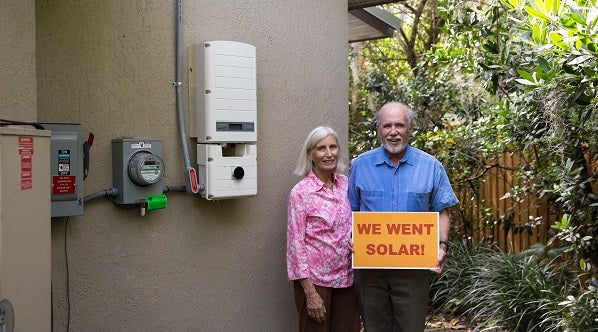Florida utilities add new charge to make solar less profitable

Earlier this year, monopoly utilities Duke Energy and Florida Power and Light (FPL) asked the Public Service Commission to grant them the largest utility rate increase in Florida history. FPL customers can expect to see their energy bill increase by more than $200 per year. The average Duke customer will see an increase of $111. It’s bad enough that these billion-dollar monopolies are raising rates at a time when many Floridians can least afford it. What’s worse is the increase will make it harder for us to gain independence from these utilities by going solar ourselves.
A provision in the rate increase allows Duke and FPL to set what is known as a “minimum bill.” Minimum bills unfairly target low energy users, such as solar customers that have made large home improvement investments, part-time residents and residents trying to age in place.
How minimum bills work and why they’re unfair for solar
The charges on your electricity bill come from different sources. Some of these are “fixed.” You pay a constant amount for them from month to month. An example of this is a customer charge, the fee everyone pays to be connected to the electric grid.
Other charges are “variable.” You pay them based on how much electricity you use. Going solar means you’re significantly lowering how much electricity you’re buying from the utility. In turn, you lower what you pay in variable charges.
How much your electric bill will be after going solar will vary. But many Florida solar homeowners report paying less than $15 per month, or a little more than the customer charge.
Duke Energy has instituted a $30 per month minimum charge. This means if you have solar, and have a bill below $30, the utility will force you to pay the difference regardless of your usage. This minimum bill will start in January of 2022.
“This increase nearly triples my bill with no change to any service that Duke Energy provides,” said Tim Mulligan, a Duke Energy customer and solar homeowner. “This will also add about $250 per year to my costs. It will increase the time frame for recovering my solar investment by nearly two years.”
FPL will force customers to pay a $25 per month minimum bill. The utility’s own estimates show this would cost its customers $30 million a year.
The minimum bill would apply to 360,000 residential customers, according to FPL’s estimates. This would include 14,000 solar owners who participate in net metering. That’s more than half of total net metered homes and businesses in FPL territory.
FPL’s proposed minimum bill comes out of a settlement agreement the company reached for their rate increase earlier this year.
This has been proposed to the Florida Public Service Commission (PSC). The PSC will make their final decision at the end of October.
If you want to help fight back against these unfair charges, sign up to volunteer. We’ll keep you informed on what you can do to protect your solar rights.
